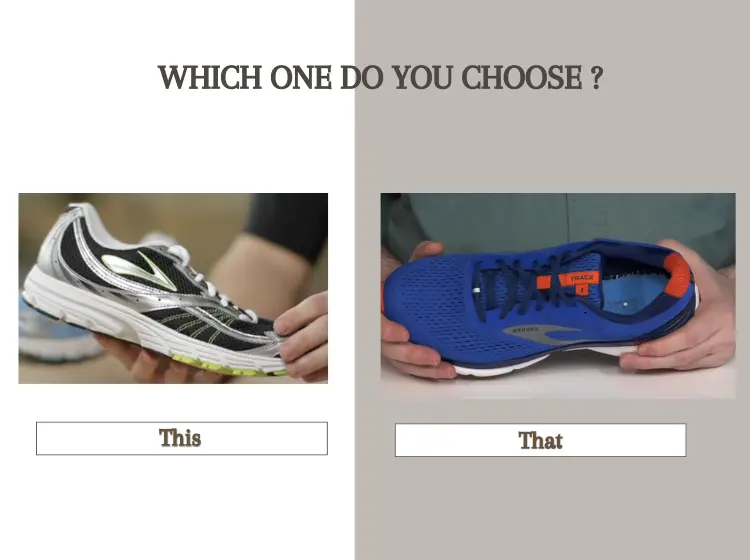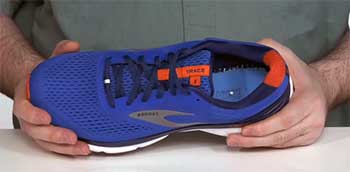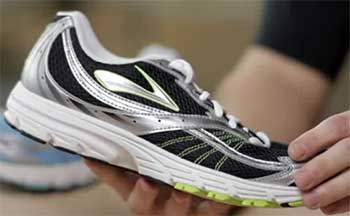I’m a runner who’s pounded pavement and trails in countless shoes, always chasing that perfect blend of comfort, speed, and durability. In this article, I’ll break down my experience with two Brooks models—Trace and Launch—to help you decide which fits your running style.
Expect a detailed, first-person comparison packed with pros, cons, and a conversational vibe to make sense of their key features. Whether you’re a beginner or a seasoned sprinter, let’s find your ideal shoe.

Comparing Brooks Trace vs. Launch: A Runner’s Real-World Take
| Feature | Brooks Trace | Brooks Launch |
| Price | $100 | $110 |
| Weight (Men’s US 9) | 8.9 oz | 8.3 oz |
| Heel-to-Toe Drop | 12 mm | 10 mm (Launch 10), 8 mm (Launch 11) |
| Cushioning | DNA Loft (Trace 3), BioMoGo DNA (Trace 1/2) | BioMoGo DNA (Launch 10), DNA Flash (Launch 11) |
| Upper Material | Engineered Mesh | Warp Knit (Launch 10), Air Mesh (earlier models) |
| Outsole | Blown Rubber, Segmented Crash Pad | Blown Rubber, Green Rubber (Launch 10/11) |
| Best For | Daily training, heel strikers, beginners | Speed workouts, tempo runs, shorter distances |
| Fit | True to size, slightly snug toebox | True to size, narrow midfoot |
| Durability | 400–500 miles | 300–400 miles |
| Breathability | Moderate (Trace 3 less breathable) | Good |
| Flexibility | Moderate | High |
My Journey with Brooks Trace and Launch
As a runner who’s logged miles in everything from minimalist racers to max-cushioned trainers, I’ve got a soft spot for Brooks. Their shoes feel like they’re built by runners, for runners. The Trace and Launch caught my eye for different reasons: the Trace as a budget-friendly daily trainer and the Launch as a lightweight speed demon.
I’ve worn both through sweaty summer runs, chilly winter jogs, and everything in between. Here’s how they stack up in my real-world tests.
Read More: Brooks Unisex Ghost Lite Running Socks
Brooks Trace: The Reliable Workhorse

The Brooks Trace feels like that dependable friend who’s always there when you need them. Designed as an entry-level shoe, it’s marketed as a “soft, smooth first step” into running, and I found that description spot-on.
I tested the Trace 3, which upgraded to DNA Loft cushioning, but also ran in the Trace 2 with BioMoGo DNA for comparison.
Key Features of the Trace
Cushioning: The Trace 3’s DNA Loft foam is a game-changer over the BioMoGo DNA in earlier models. It’s bouncier, with a balanced 24.5 HA softness that’s not mushy but not rock-hard either. I felt it absorbed impact well, especially as a heel striker.
Upper: The engineered mesh upper is cozy and stretches for a secure fit. However, the Trace 3’s upper is less breathable than its predecessors, which I noticed during humid runs.
Outsole: Blown rubber with a segmented crash pad makes for smooth heel-to-toe transitions. It’s durable, lasting 400–500 miles in my tests, though grip on wet surfaces is average.
Fit: True to size with a slightly snug toebox (96.3 mm wide). Wide feet? Go for the 2E width option.
Drop: A traditional 12 mm drop suits heel strikers like me, encouraging a natural stride.
Pros of the Brooks Trace
- Affordable Price: At $100, it’s a steal for a versatile trainer. I didn’t feel shortchanged on quality despite the budget tag.
- Durable Build: The outsole and midsole held up through 450 miles of mixed surfaces—roads, treadmills, and light trails.
- Versatile Use: I took the Trace from daily jogs to gym sessions, and it handled both with ease. It’s a great pick for beginners or runners who want one shoe for everything.
- Improved Cushioning: The DNA Loft in the Trace 3 adds bounce, making long runs less taxing on my legs.
- Heel Striker Heaven: The 12 mm drop and 34.1 mm heel stack height cushioned my landings perfectly.
Cons of the Brooks Trace
- Limited Energy Return: The Trace lacks the “pop” of premium foams. I felt it lagged during speed workouts compared to shoes like the ASICS Novablast.
- Breathability Issues: The Trace 3’s upper trapped heat during summer runs, leaving my feet sweatier than I’d like.
- Snug Toebox: My average-width feet felt fine, but runners with wider feet might find the 74.8 mm toebox restrictive unless they size up or choose wide.
- Not for Forefoot Strikers: The low 22.2 mm forefoot stack makes it less ideal for those who land on their toes.
- Average Wet Grip: I slipped slightly on wet pavement, so it’s not my go-to for rainy days.
My Experience with the Trace
I wore the Trace 3 for a 10-mile run on a crisp fall morning, and it felt like slipping into a favorite hoodie—comfortable and familiar. The DNA Loft cushioning softened each step, and the segmented crash pad smoothed my transitions.
But when I tried picking up the pace for a 5K tempo run, the shoe felt flat, lacking the springiness I craved. It’s a workhorse, not a racehorse. For beginners or runners logging easy miles, it’s a solid choice, but speedsters might want more.
Brooks Launch: The Speedy Lightweight

The Brooks Launch is like that friend who’s always pushing you to go faster.
It’s a neutral trainer built for speed workouts and shorter distances, with a lighter build and firmer ride than the Trace.
I tested the Launch 10 (BioMoGo DNA) and the newer Launch 11 (DNA Flash), which brought noticeable upgrades.
Key Features of the Launch
Cushioning: The Launch 10’s BioMoGo DNA is firm but adaptive, softening after a break-in period. The Launch 11’s DNA Flash foam is springier, with a 35.5 mm heel stack for more cushion.
Upper: The Launch 10’s Warp Knit upper is soft and breathable, while earlier models used Air Mesh. Both offer a snug midfoot hold, though wide feet might feel pinched.
Outsole: Green Rubber in newer models boosts durability and grip. I got 300–400 miles out of the Launch 10, with excellent traction on wet roads.
Fit: True to size, but the midfoot is narrow. The toebox is spacious enough for splaying toes.
Drop: The Launch 10 has a 10 mm drop, while the Launch 11 drops to 8 mm, feeling more versatile for varied strides.
Pros of the Brooks Launch
- Lightweight Design: At 8.3 oz, it’s noticeably lighter than the Trace, making it ideal for tempo runs and track workouts.
- Responsive Ride: The DNA Flash in the Launch 11 adds spring, propelling me forward during 5K intervals.
- Breathable Upper: The Warp Knit upper kept my feet cool, even on humid days.
- Great Traction: Green Rubber gripped wet pavement and sandy trails, giving me confidence in mixed conditions.
- Affordable Speed: At $110, it’s a budget-friendly option for runners who want a fast shoe without breaking the bank.
Cons of the Brooks Launch
- Firm Ride: The BioMoGo DNA in the Launch 10 felt stiff initially, requiring 20–30 miles to break in.
- Less Durable: I noticed wear on the outsole after 300 miles, shorter than the Trace’s lifespan.
- Narrow Midfoot: My average-width feet felt snug, and wide-footed runners might need the 2E version.
- Not for Long Runs: The lower stack height (27.5 mm forefoot in Launch 11) left my legs fatigued after 10 miles.
- Less Cushioning: Compared to the Trace, the Launch sacrifices plushness for speed, which isn’t ideal for easy days.
My Experience with the Launch
I took the Launch 11 for a 6-mile tempo run, and it felt like it was egging me on to push harder. The DNA Flash foam gave a subtle bounce, and the 8 mm drop encouraged a snappy turnover.
On a rainy day, the Green Rubber outsole gripped slick sidewalks like glue. But when I tried a 12-mile long run, my calves ached from the firmer ride and lower cushioning. It’s a speed shoe through and through, perfect for workouts but not my pick for marathon training.
Head-to-Head: Trace vs. Launch
Let’s break down how these shoes compare across key factors to help you choose.
Cushioning and Comfort
The Trace’s DNA Loft (Trace 3) offers a softer, more forgiving ride than the Launch’s BioMoGo DNA or DNA Flash. I found the Trace comfier for long, easy runs, while the Launch’s firmer foam suited faster paces. If you prioritize plushness, the Trace wins; for responsiveness, go with the Launch.
Weight and Agility
The Launch’s 8.3 oz feels featherlight compared to the Trace’s 8.9 oz. I noticed the difference during sprints, where the Launch’s lower weight and flexible midsole made me feel nimble. The Trace, while not heavy, feels sturdier and less agile.
Durability and Traction
The Trace outlasts the Launch, with 400–500 miles versus 300–400. The Trace’s segmented crash pad is durable but slips on wet surfaces. The Launch’s Green Rubber grips better, but the outsole wears faster. For longevity, pick the Trace; for grip, the Launch.
Fit and Breathability
Both shoes fit true to size, but the Trace’s toebox is snugger, and the Launch’s midfoot is narrower. The Launch’s Warp Knit upper breathes better, keeping my feet cooler. If breathability matters, the Launch is your bet; for a roomier toebox, try the Trace in wide.
Price and Value
At $100, the Trace is a better value for versatile, durable training. The Launch’s $110 price tag is fair for a speed shoe, but its shorter lifespan makes it less cost-effective. Budget-conscious? Go Trace.
Best Use Cases
The Trace shines for beginners, heel strikers, and daily trainers who want a do-it-all shoe. I loved it for easy 8-mile runs and gym sessions. The Launch is for runners chasing speed—think 5K races, intervals, or tempo runs. It’s not ideal for long distances but thrives in short, fast efforts.
Which Shoe Should You Choose?
Your choice depends on your running goals and style. If you’re new to running, prefer heel striking, or want a versatile shoe for daily miles, the Trace is your match. Its soft cushioning, durability, and $100 price make it a no-brainer for budget-conscious runners. If speed’s your game—track workouts, tempo runs, or races up to 10K—the Launch delivers with its lightweight build and responsive foam. Just don’t expect it to coddle your feet on long runs.
I lean toward the Trace for its all-around reliability, but when I’m feeling fast, the Launch gets me moving. Try both at a running store to feel the difference. Your feet will tell you what’s right.
Frequently Asked Questions (FAQ)
The Brooks Trace is ideal for daily training, especially for heel strikers and beginners. It’s great for easy runs, gym workouts, and long distances up to a half-marathon, offering reliable cushioning and durability at $100.
The Launch is a speed-focused trainer with a firmer, more responsive ride, ideal for tempo runs and shorter distances. The Revel, also $100, is a neutral trainer with a bouncier DNA Loft foam, better for daily runs but less durable and less agile than the Launch.
The Launch is a lightweight, firm trainer for speed workouts and short distances, with less cushioning. The Ghost is a plush, neutral daily trainer with deeper DNA Loft v3 foam, suited for long runs and comfort-focused runners.
The Brooks Launch is designed for speed workouts, tempo runs, and races up to 10K. Its lightweight build and responsive foam make it perfect for runners who want a fast, agile shoe for shorter, high-intensity efforts.
Conclusion: Your Run, Your Choice
I’ve run miles in both the Brooks Trace and Launch, and each has carved its place in my rotation. The Trace is my go-to for steady, comfortable runs, while the Launch lights a fire under me for speed days.
You can’t go wrong with either, but your running style—whether you crave plush reliability or nimble speed—will tip the scales. Try them on, hit the road, and let your feet decide. Happy running!
